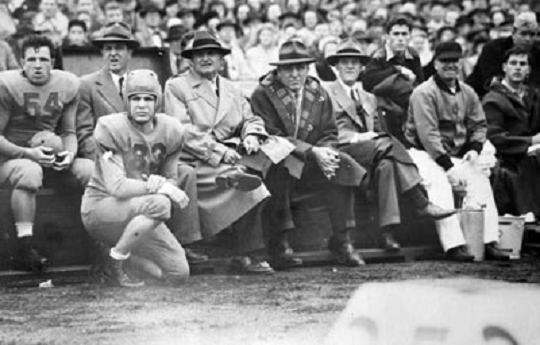


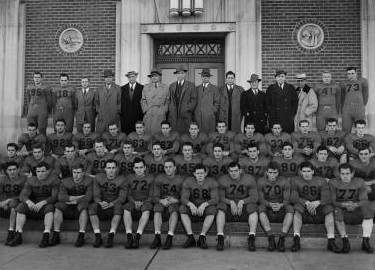
| Washington (7-2) | 19-14 | #10 |
| Nebraska (8-2) | 13-7 | #9 |
| at Ohio State (4-4) | 13-7 | #25 |
| Iowa (4-4) | 34-6 | |
| at Northwestern (6-2) | 13-12 | #6 |
| Michigan (7-1) | 7-6 | #3 |
| Purdue (2-6) | 33-6 | |
| at Wisconsin (4-4) | 22-13 |
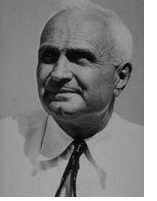 Minnesota had won 3 consecutive MNCs 1934-1936,
so this season gave them their 4th in 7 years, and they would win yet
another in 1941 to make it 5 in 8 years. Truly a glorious time to be a
Gopher fan. I covered their Hall of Fame coach, Bernie Bierman (pictured at left), in my
1934 national championship article.
Minnesota had won 3 consecutive MNCs 1934-1936,
so this season gave them their 4th in 7 years, and they would win yet
another in 1941 to make it 5 in 8 years. Truly a glorious time to be a
Gopher fan. I covered their Hall of Fame coach, Bernie Bierman (pictured at left), in my
1934 national championship article.
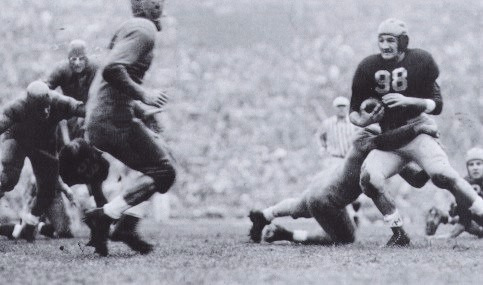
| at San Francisco (1-6-1) | 27-0 | |
| Oregon (4-4-1) | 13-0 | |
| Santa Clara (6-1-1) | 7-6 | #11 |
| at Washington State (4-4-2) | 26-14 | |
| Southern Cal (3-4-2) | 21-7 | |
| at UCLA (1-9) | 20-14 | |
| Washington (7-2) | 20-10 | #10 |
| Oregon State (5-3-1) | 28-14 | |
| at California (4-6) | 13-7 | |
| Rose Bowl Nebraska (8-2) | 21-13 | #9 |
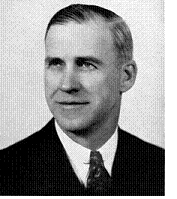 Stanford claims an MNC for 1926, when they were coached by Hall of Famer Pop Warner. I don't recognize that one, but I did select Stanford as co-MNC of 1935.
That team was known as the "Vow Boys" because of a vow its seniors had
made as freshmen never to lose to Southern Cal, and they kept that vow.
The Vow Boys had won the PCC and appeared in the Rose Bowl 3 straight
seasons 1933-1935, and as a rhyming nod to them, this year's 10-0 Rose
Bowl team was called the "Wow Boys."
Stanford claims an MNC for 1926, when they were coached by Hall of Famer Pop Warner. I don't recognize that one, but I did select Stanford as co-MNC of 1935.
That team was known as the "Vow Boys" because of a vow its seniors had
made as freshmen never to lose to Southern Cal, and they kept that vow.
The Vow Boys had won the PCC and appeared in the Rose Bowl 3 straight
seasons 1933-1935, and as a rhyming nod to them, this year's 10-0 Rose
Bowl team was called the "Wow Boys."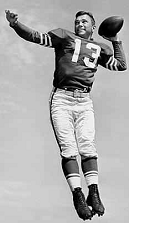 The
star of the Wow Boys was quarterback Frankie Albert (pictured), a
consensus All American this year and the next, and a Hall of Famer. He
had been a mediocre tailback in Stanford's single wing in 1939. Single
wing offenses varied from coach to coach, but generally a single wing
quarterback was a blocking back, and Albert wasn't much of a blocker,
and he was little more than a competent runner. However, he was a very
adept ball handler and passer, and that made him ideal for a T
formation quarterback. He flourished in his new position and formation,
and he was the kicker too. In the Rose Bowl this season, he threw a 41
yard touchdown pass, kicked 3 extra points, and boomed an 85 yard punt.
Albert played for the San Francisco 49ers 1946-1952, and was a four
time all-pro. He was essentially the first modern quarterback.
The
star of the Wow Boys was quarterback Frankie Albert (pictured), a
consensus All American this year and the next, and a Hall of Famer. He
had been a mediocre tailback in Stanford's single wing in 1939. Single
wing offenses varied from coach to coach, but generally a single wing
quarterback was a blocking back, and Albert wasn't much of a blocker,
and he was little more than a competent runner. However, he was a very
adept ball handler and passer, and that made him ideal for a T
formation quarterback. He flourished in his new position and formation,
and he was the kicker too. In the Rose Bowl this season, he threw a 41
yard touchdown pass, kicked 3 extra points, and boomed an 85 yard punt.
Albert played for the San Francisco 49ers 1946-1952, and was a four
time all-pro. He was essentially the first modern quarterback.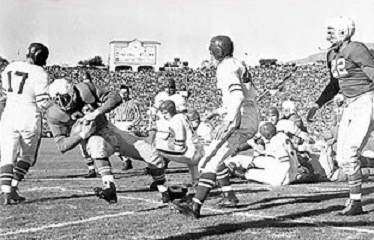
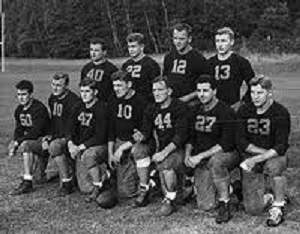
| Centre (3-6) | 40-0 | |
| at Tulane (5-5) | 27-7 | |
| Temple (4-4-1) | 33-20 | |
| Idaho (1-7-1) | 60-0 | |
| St. Anselm (5-4) | 55-0 | |
| Manhattan (3-6) | 25-0 | |
| Boston | 21-0 | |
| Georgetown (8-2) | 19-18 | #13 |
| Auburn (6-4-1) | 33-7 | (#26-30) |
| Holy Cross (4-5-1) | 7-0 | |
| Sugar Bowl Tennessee (10-1) | 19-13 | #5 |
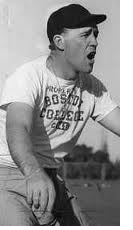 Boston
College had emerged as a winning minor team in 1916, and they went
119-45-8 from then through 1935. Hall of Fame coach Gil Dobie took over
in 1936, and he oversaw a big schedule upgrade from 1-3 major (or
mid-major) opponents per year to 6-7 major opponents per year, which in
turn moved Boston College up from a minor program to a major program. Dobie went 16-6-5 1936-1938.
Boston
College had emerged as a winning minor team in 1916, and they went
119-45-8 from then through 1935. Hall of Fame coach Gil Dobie took over
in 1936, and he oversaw a big schedule upgrade from 1-3 major (or
mid-major) opponents per year to 6-7 major opponents per year, which in
turn moved Boston College up from a minor program to a major program. Dobie went 16-6-5 1936-1938.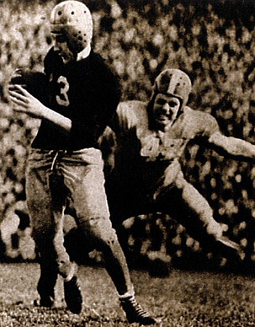
| Minnesota 8-0 | Stanford 10-0 | Boston College 11-0 | |||||||||||||||||||||||||||||||||||||||||||||
|---|---|---|---|---|---|---|---|---|---|---|---|---|---|---|---|---|---|---|---|---|---|---|---|---|---|---|---|---|---|---|---|---|---|---|---|---|---|---|---|---|---|---|---|---|---|---|---|
|
|
|
|||||||||||||||||||||||||||||||||||||||||||||
| 1) Boand
(math system) College Football Researchers Association Poling (math) Houlgate (math) Billingsley (math) |
5.0 |
| 6) AP Poll National Championship Foundation |
4.8 |
| 8) Litkenhous (math) | 4.3 |
| 9) Helms Foundation | 4.1 |
| 10) Sagarin-ELO (math) | 4.0 |
| 11) Sagarin (math) | 3.3 |
| 12) Dunkel (math) | 3.2 |
| 13) Dickinson (math) | 3.0 |
| 14) Williamson (math) | 2.8 |
| 1) Boand (math system) | 4.26 |
| 2) College Football Researchers Association | 4.22 |
| 3) Poling (math) | 4.11 |
| 4) Helms | 4.09 |
| 5) Sagarin-ELO (math) | 4.06 |
| 6) National Championship Foundation | 3.96 |
| 7) Dickinson (math) | 3.49 |
| 8) Houlgate (math) | 3.35 |
| 9) Billingsley (math) | 3.34 |
| 10) Sagarin (math) | 3.28 |
| 11) Parke Davis | 2.77 |
| 1) Houlgate (math system) | 4.5 |
| 2) Helms | 4.3 |
| 3) Parke Davis | 4.2 |
| 4) National Championship Foundation | 3.7 |
| 5) Billingsley (math) | 3.6 |